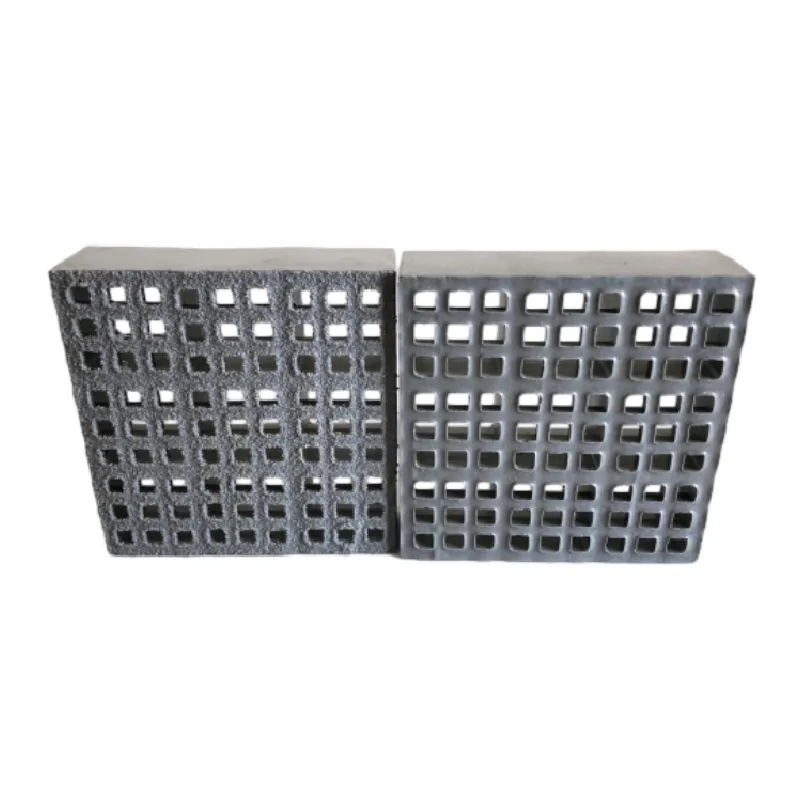loading...
- No. 9, Xingyuan South Street, Dongwaihuan Road, Zaoqiang County, Hengshui, Hebei, China
- admin@zjcomposites.com
- +86 15097380338
- Welcome to visit our website!
frp grating panels
Understanding FRP Grating Panels An Essential Component for Modern Infrastructure
Fiber Reinforced Polymer (FRP) grating panels are an engineering innovation that has gained significant traction in various industries due to their unique properties and versatile applications. FRP is a composite material made of polymer resin reinforced with glass, carbon, or aramid fibers. This combination imparts a range of advantageous characteristics, making FRP grating an ideal choice for numerous industrial settings.
Properties of FRP Grating Panels
One of the defining features of FRP grating panels is their high strength-to-weight ratio. This property allows them to withstand heavy loads while remaining lightweight, which simplifies handling and installation. Additionally, they are highly resistant to corrosion, making them suitable for environments that involve exposure to chemicals, water, and other harsh conditions. Unlike traditional materials like steel, which can rust and deteriorate over time, FRP panels maintain their integrity and functionality over extended periods, significantly reducing maintenance requirements.
Another notable characteristic of FRP grating is its non-conductive nature. This is particularly beneficial in electrical environments where safety is paramount. The non-slip surface of FRP grating also promotes safety in areas prone to wetness, reducing the risk of slip-and-fall accidents. Furthermore, the range of colors and finishes available in FRP panels allows for customization to fit the aesthetic requirements of various projects.
Applications of FRP Grating Panels
FRP grating panels are used across multiple sectors, showcasing their versatility. In the construction industry, they are commonly utilized for walkways, platforms, and stairs. Their lightweight nature reduces the structural load, which can lead to more economical designs. In marine applications, FRP panels provide durability and safety on docks, piers, and walkways, where constant exposure to seawater can quickly degrade traditional materials.
frp grating panels

The chemical and petrochemical industries also extensively use FRP grating due to its resistance to corrosive substances. It provides effective solutions for flooring in processing plants, storage areas, and refineries. In these settings, the importance of safety cannot be overstated; FRP grating panels help ensure worker safety by minimizing slip hazards and offering a stable surface for foot traffic.
Additionally, FRP grating is gaining popularity in wastewater treatment facilities. The panels allow for effective drainage while providing a durable platform that can withstand constant exposure to harsh chemicals and wastewater conditions. Their lightweight nature facilitates easy installation, maintenance, and replacement when necessary.
Environmental Benefits
As concerns regarding environmental sustainability grow, FRP grating panels offer a responsible choice for modern infrastructure. The manufacturing process of FRP typically consumes less energy compared to traditional materials like metal and concrete. Moreover, FRP has a long lifespan, reducing the need for frequent replacements and minimizing the environmental impact associated with material disposal. Many FRP products are also recyclable, further highlighting their eco-friendly credentials.
Conclusion
FRP grating panels stand out as a formidable option in the realm of modern materials, offering a harmonious blend of strength, safety, and environmental responsibility. Their broad spectrum of properties enables them to meet the diverse needs of various industries, from construction and chemical processing to marine applications and wastewater management. As industries continue to evolve and seek materials that align with sustainability goals, FRP grating panels are likely to see an increase in adoption, reflecting a growing recognition of their performance benefits and versatility. Investing in FRP grating is not merely a selection of a product; it is a step towards a safer, more efficient, and sustainable future for infrastructure development.
-
The Rise of FRP Profiles: Strong, Lightweight, and Built to LastNewsJul.14,2025
-
SMC Panel Tanks: A Modern Water Storage Solution for All EnvironmentsNewsJul.14,2025
-
GRP Grating: A Modern Solution for Safe and Durable Access SystemsNewsJul.14,2025
-
Galvanized Steel Water Tanks: Durable, Reliable, and Ready for UseNewsJul.14,2025
-
FRP Mini Mesh Grating: The Safer, Smarter Flooring SolutionNewsJul.14,2025
-
Exploring FRP Vessels: Durable Solutions for Modern Fluid HandlingNewsJul.14,2025
-
GRP Structures: The Future of Lightweight, High-Performance EngineeringNewsJun.20,2025
